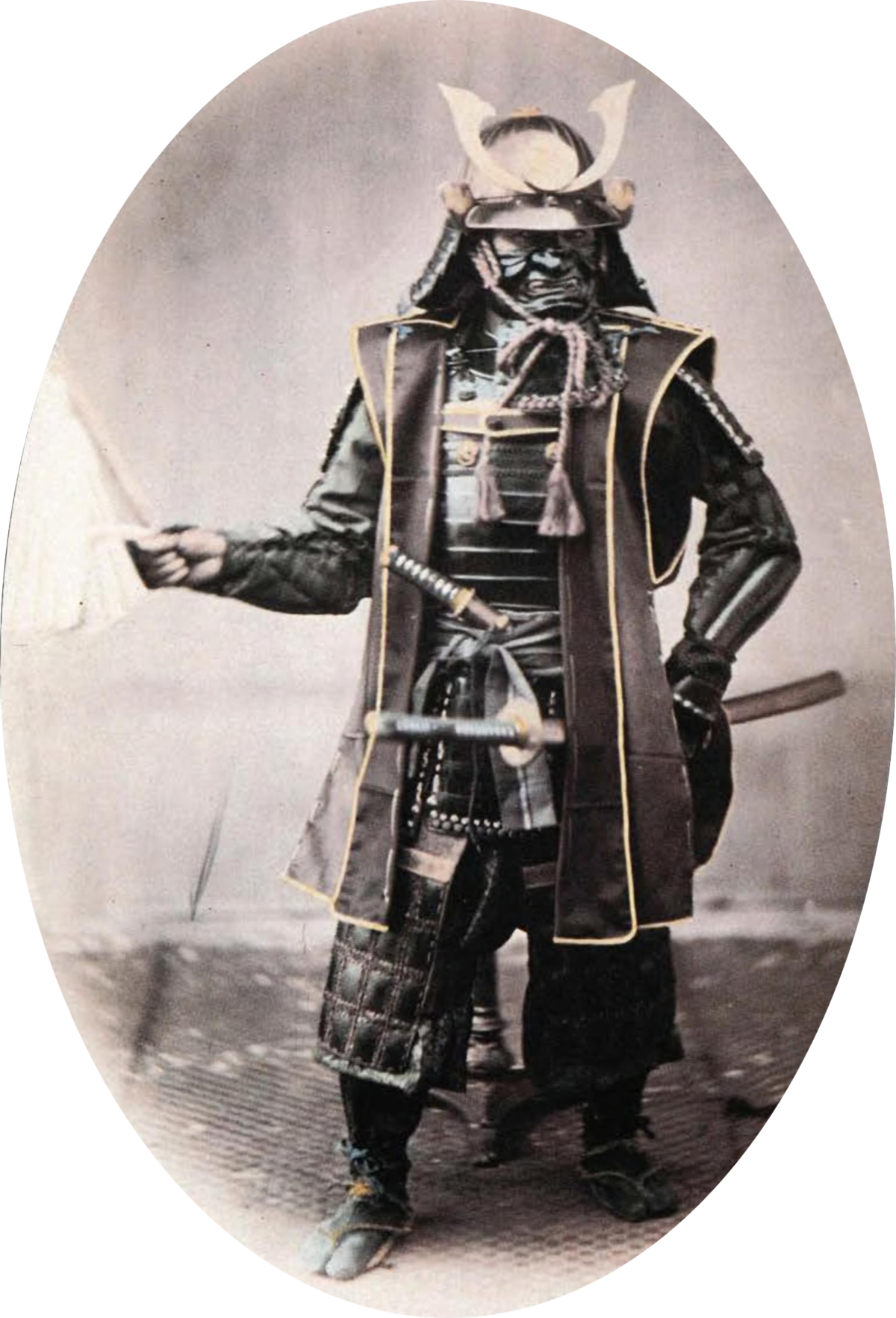Samurai Thoughts
So, if I’m heading toward a new campaign starting circa October of this year, and if this campaign is to use the 5E D&D ruleset but with influences from early edition Oriental Adventures and Birthright, that means renaming, tweaking, and rewriting a certain amount of material. For example, no OA-inspired setting would be complete with a samurai character class. After rummaging through my bookshelves, I found five books, each one with a version of the samurai. To wit:

Oriental Adventures (1E): This character class starts with katana specialization and the possibility of specializing in daikyu, making samurai the only class allowed two weapon specializations. As they advance in levels, samurai become proficient in horsemanship, the bow, calligraphy, painting, and poetry. They gain multiple attacks at higher levels. Samurai can focus their ki via a “loud, fierce shout” that increases attack and damage ability. As samurai earn levels, they become more able to damage foes, gain immunity to fear, are harder to surprise, and can cause fear in their enemies.
The Complete Fighter’s Handbook (2E): This warrior kit grants bonus weapon and nonweapon proficiencies that focus on samurai weapons and skills. The kit grants the “loud, fierce shout” ability found in 1E OA.
Oriental Adventures (3E): This character class grants an ancestral daisho at first level. The daisho becomes more powerful as the samurai earns levels. Starting at 2nd level, the samurai gains bonus feats drawn from a list of feats associated with the different samurai clans.
Complete Warrior (3E): Another take on the samurai as a character class. This time the samurai gains daisho proficiency at 1st level, but the samurai’s daisho do not gain power as the samurai advances in level. At 2nd level, the samurai learns to fight with both katana and wakizashi at the same time. After that, we see a return of the “loud, fierce shout” theme coupled with a gradually improving ability to cause fear in enemies.
Xanathar’s Guide to Everything (5E): The samurai is a fighter subclass, available starting at 3rd level. The samurai gets a bonus skill proficiency and a “fighting spirit” to start. The latter improves a single weapon attack and grants bonus hit points. At higher levels, the samurai becomes an “elegant courtier” and his fighting spirit ability expands and improves.
Out of these five options, I prefer the samurai be its own class rather than an add-on (2E) or a subclass (5E). These abilities seem a must:
- Emphasis on the daisho.
- Skills that combine martial and courtly foci.
- Some sort of “loud, fierce shout” ability.
- Some sort of ability to cause fear, perhaps related to the “loud, fierce shout” ability.
Samurai subclasses (available starting at 3rd level) might focus on different different fighting styles. For example, a Hyoho Niten Ichi-ryu style would focus on fighting with two swords, using one for offense and the other for defense, whereas a Muso Jikiden Eishin-ryu would focus on drawing and cutting with the sword as a single motion. What might these look like in game terms and modified for a fantasy world? Well, I’m not sure about that.
My initial thoughts involve basing different subclass abilities on the themes of eight or so samurai fighting styles. To fit the subclass pattern of things, each style would need to grant an ability at 3rd, 7th, 10th, 15th, and 18th levels. Since I’m not even going to attempt create 40 different abilities, I’d combine fighting styles, ignore this, emphasize that, et cetera. My goal isn’t historical accuracy.
If I whittled down, say, eight fighting styles to three or four, I could then create a “menu” of character options for the aforementioned levels. A samurai who focuses on a single style would have greater ability within a narrow field, whereas a samurai who dabbles a bit in different styles would have a wider range of weaker abilities.
Perhaps over the next few days, I’ll put together a rough-draft samurai class?
Next up, to repeat myself, for the first time in a while, I’ve finished a new Spes Magna product, this time for 5E D&D. The Ways Of… presents seven new monastic traditions, each one available to a different core rules race.

Leave a Reply